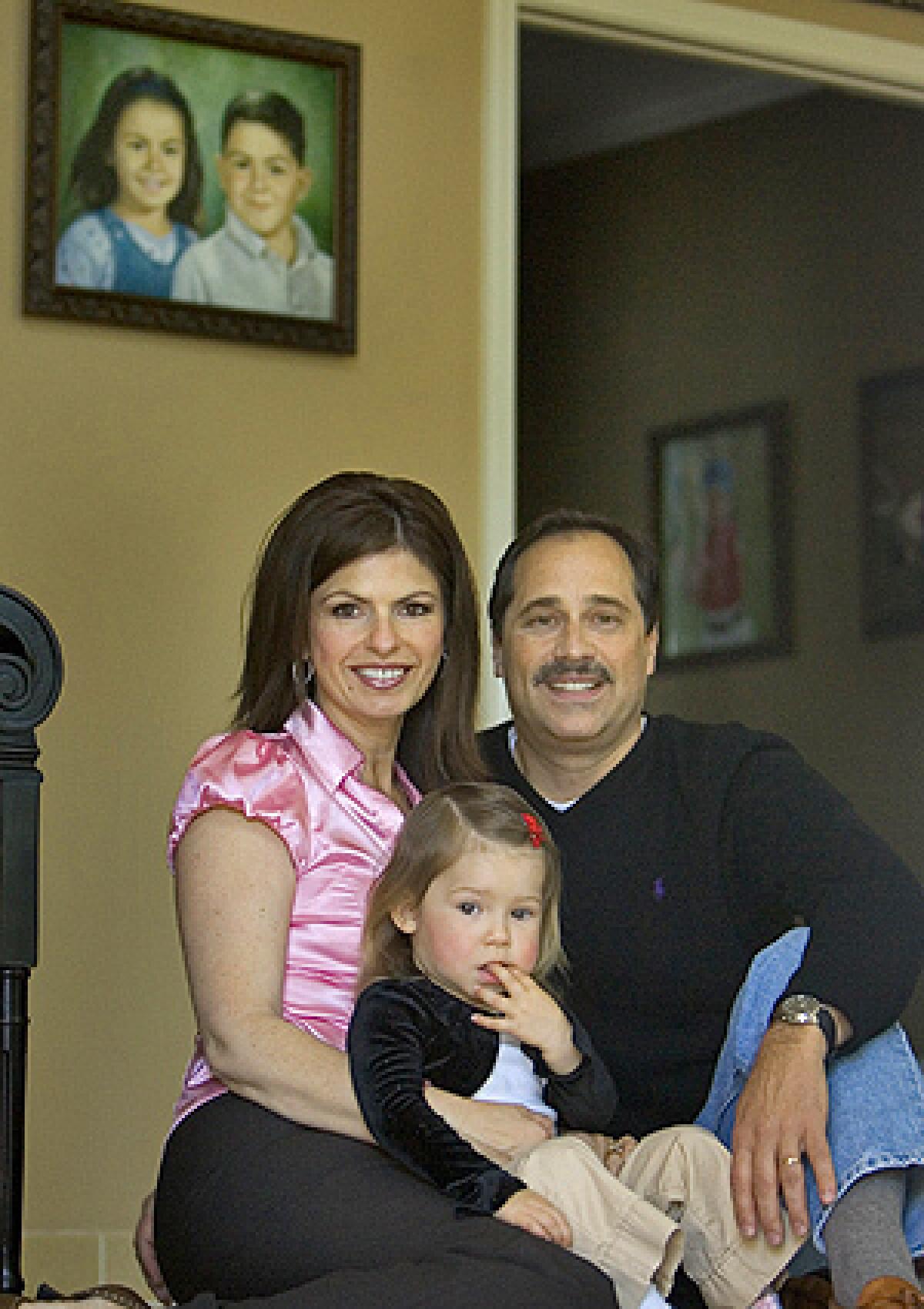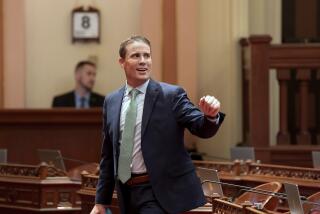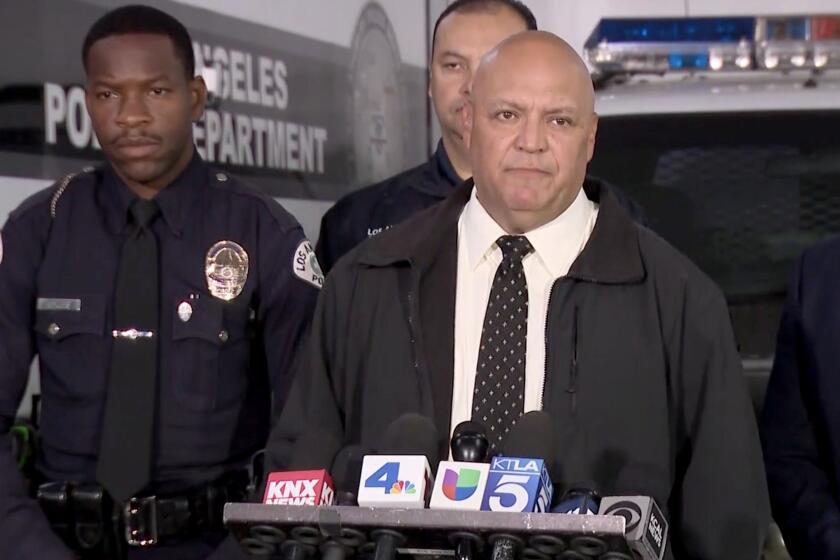Prescriptions supplanting illegal substances as drugs of choice

A Riverside County psychiatrist who drove a Corvette and lived in a gated community allegedly wrote prescriptions in the lobby of his fitness club and outside restaurants for $100 each.
More than $1 million was stashed in luggage at the house of an Orange County physician who sold black plastic bags of narcotic painkillers.
And at one Los Angeles pharmacy, people peddled medications out front while others squeezed inside to buy more drugs.
Health professionals and dishonest patients are diverting powerful and potentially addictive prescription drugs from legitimate medical channels, helping to fuel a shift toward pharmaceuticals as drugs of choice, authorities say.
Pharmacy thefts, robberies and burglaries also are contributing to the problem, investigators say, along with prescription forgeries and Internet pharmacies that require little information before shipping drugs. Nationwide, 25 million doses of commonly abused drugs were reported stolen last year.
In California, where almost 34 million prescriptions for narcotics and other controlled substances were written last year, the drug diversion problem has caught the attention of state Atty. Gen. Jerry Brown. He says he plans to upgrade the state’s monitoring system to allow health practitioners to check patients’ histories before prescribing potentially dangerous medications.
“Doctors and pharmacies can instantly check out if the patient before them is legitimate or an abuser,” Brown said in an interview. “We will be in a better position to control illegal diversion.”
Law enforcement officials say high-profile accidental overdoses, such as that of former Playboy Playmate Anna Nicole Smith, are symptomatic of entrenched abuse and misuse of prescription drugs. The federal government’s most recent survey reported that 7 million Americans engaged in nonmedical use of pharmaceuticals in 2006 -- up from 6 million two years earlier. And that usage was higher than for any illicit drug except marijuana.
“Unlike illicit drug use, which shows a continuing downward trend, prescription drug abuse . . . has seen a continual rise through the 1990s and has remained stubbornly steady . . . during recent years,” Dr. Nora D. Volkow, director of the National Institute on Drug Abuse, told a congressional hearing in March.
And local law enforcement officials cite a surge in the use of prescription drugs as street narcotics.
‘Drug of choice’
“What we are seeing is that prescription drugs . . . are quickly becoming the drug of choice and abuse,” said Murrieta Police Lt. Dennis Vrooman.
In late 2006 and early 2007, Murrieta police were hearing complaints that psychiatrist Joel Stanley Dreyer -- a cowboy boot-wearing, extreme-fighting aficionado whose personalized license plates read FREUDMD -- was prescribing highly addictive drugs to apparently healthy young people.
Then an Orange County businessman showed up with a sad story that dovetailed with that information. On Christmas Day of 2005, he and his mother had found the body of his 35-year-old sister, Jessica Silva, in her Newport Beach condominium.
Silva seemed an unlikely overdose victim. The divorced saleswoman had about $900,000 in assets. But she had been arrested for drug possession years earlier and gone through rehab -- and the coroner found many drugs in her system. Her last prescription was for OxyContin, a painkiller Dreyer had prescribed a few weeks earlier.
Her brother conducted his own investigation. Posing as a new patient at Dreyer’s office, he complained of pain and difficulty sleeping, the brother later told police. Without conducting an examination, Dreyer prescribed three drugs and charged $100, according to an FBI court affidavit.
In 2007, three undercover officers also obtained prescriptions for $100 each during tape-recorded visits, the affidavit says. “And that, my love,” Dreyer quipped to a female Drug Enforcement Administration agent, “is the game.”
Now Dreyer, whose medical license was suspended last summer, faces a 19-count federal indictment alleging illegal drug dispensing. His attorney, Wayne Gross, declined to comment. Dreyer has pleaded not guilty.
Police say they do not know how much money Dreyer made.
“His car was leased and his home was rented, so that would lead to speculation as to whether he spent all the money or it is hidden somewhere,” Murrieta Police Det. John Nelson said.
In the case of Anaheim physician Peter A. Ahles, that question was answered in dramatic fashion.
Three years ago, the state medical board was examining whether Ahles was prescribing drugs without a valid medical reason. It also was looking into the overdose death of his son’s 39-year-old roommate, who received narcotics prescriptions from the doctor despite a history of addiction.
After undercover officers obtained pills for cash at his office, Ahles was arrested in mid-2005, and $1.35 million was seized at his home. The doctor pleaded guilty to illegally dispensing a controlled substance and was placed on six months’ home detention and three years’ probation. He surrendered his medical license.
Ahles is a Korean War veteran who walks with a limp and empathizes with people in pain because he has chronic pain, said his attorney, Stephen M. Tornay.
“Some in the drug-addict crowd got wind that he was an easy mark to get drugs, which he did become,” Tornay said.
Doctors disciplined
Records show the state medical board disciplines several dozen doctors a year for inappropriate prescribing and for abusing drugs and alcohol themselves, but drug diversion cases are not tallied separately.
Dr. Bob Wailes, a San Diego pain specialist who reviews cases for the board, said: “I have seen egregious overuse of narcotics without physical examination and a good diagnosis. Those are uncommon. . . . I have also seen examples where . . . the doctor has been challenged [by law enforcement] for what falls into acceptable levels of prescribing narcotics for chronic pain.”
Drug diversion investigations can be complex and take many months.
Several years ago, a multiagency task force in Los Angeles began looking at SNG Pharmacy on West Pico Boulevard after complaints of open drug dealing outside.
“We . . . have video of people crushing pills and mixing them with cough syrup on the sidewalk,” Los Angeles County Sheriff’s Sgt. Steve Opferman said. “It was a mill for street addicts.”
In 2005, an undercover deputy encountered about 30 people inside, calling out drug orders. After writing his name, address, birth date and phone number on a piece of paper, the deputy said, he bought an unlabeled bottle of Soma, a painkilling muscle relaxant.
State investigators found that the pharmacy had purchased several million doses of drugs over a two-year period but could not account for hundreds of thousands of them.
The owner, Siamak Davoodi, pleaded no contest to misdemeanor dispensing of medication without the proper labeling or container. His pharmacy board licenses were revoked in 2006 and he was ordered to pay nearly $100,000 in investigative costs.
Davoodi’s attorney, Herb Weinberg, declined to comment on the case.
Other avenues for prescription diversion are forgery and fraud. In San Diego, for example, a nurse admitted in 2006 that she obtained narcotics by using forms stolen from a doctor, according to the attorney general’s office.
Last year, a woman was caught four times phoning bogus prescriptions to pharmacies.
Officials at Medi-Cal, the state’s health program for the poor, have conducted nearly 500 drug diversion investigations since 2003, resulting in 182 criminal complaints.
Doctor shopping, in which a patient seeks prescriptions from multiple physicians, is on the rise among Medi-Cal recipients, according to Bruce Edwards, the state health department’s chief investigator.
“My section chief in Los Angeles just got 30 to 40 referrals of beneficiaries shopping and abusing,” he said.
Fraud is more common
At White Memorial Medical Center in East L.A., Dr. Brian Johnston said prescription fraud is increasingly common. The emergency room chief said people used his prescriber identification to try to get at least six Vicodin prescriptions last year and one recently.
They call a pharmacy “and say, ‘I am Suzie and I work for Dr. Johnston, and he wants a refill on this prescription,’ ” Johnston said.
To detect fraud and abuse, pharmacists and doctors can fax or mail requests for a patient’s prescription history from the database maintained by the attorney general’s office, but the process can take weeks.
Bob Pack, who owns an East Bay computer company, wants to speed up the system -- for personal reasons.
In 2003, his 10-year-old son Troy and 7-year-old daughter Alana were heading out for ice cream when a car jumped the curb, killing them. The driver, a nanny who recently had received multiple prescriptions from doctors, told police she had taken at least eight Vicodins and muscle relaxants. She is now serving a second-degree murder sentence of 30 years to life in state prison.
After helping to fund a feasibility study, Pack is offering to raise $3 million to build and support a computer system for three years that would allow almost instantaneous checks of patient prescription records.
“It might have saved my children’s lives and might save lives in the future,” he said, adding that he would donate the system to the state.
Not everyone applauds such efforts. Tracking systems and prosecutions of doctors can have a chilling effect that deprives legitimate patients of medicines they need because they are hurting, said Siobhan Reynolds, founder of the nonprofit Pain Relief Network.
“People who, through no fault of their own, need medications are being spied on by the government,” Reynolds said. As for doctors, she said: “If you treat those illnesses, you are more likely to be targeted.”
DEA officials said they strike a balance between ferreting out drug diversion and ensuring legitimate access to medication. In fiscal 2007, the agency investigated 224 doctors and osteopaths -- a fraction of 1%.
“That is minuscule,” said Mark Caverly of the DEA’s Office of Diversion Control.
More to Read
Start your day right
Sign up for Essential California for news, features and recommendations from the L.A. Times and beyond in your inbox six days a week.
You may occasionally receive promotional content from the Los Angeles Times.






